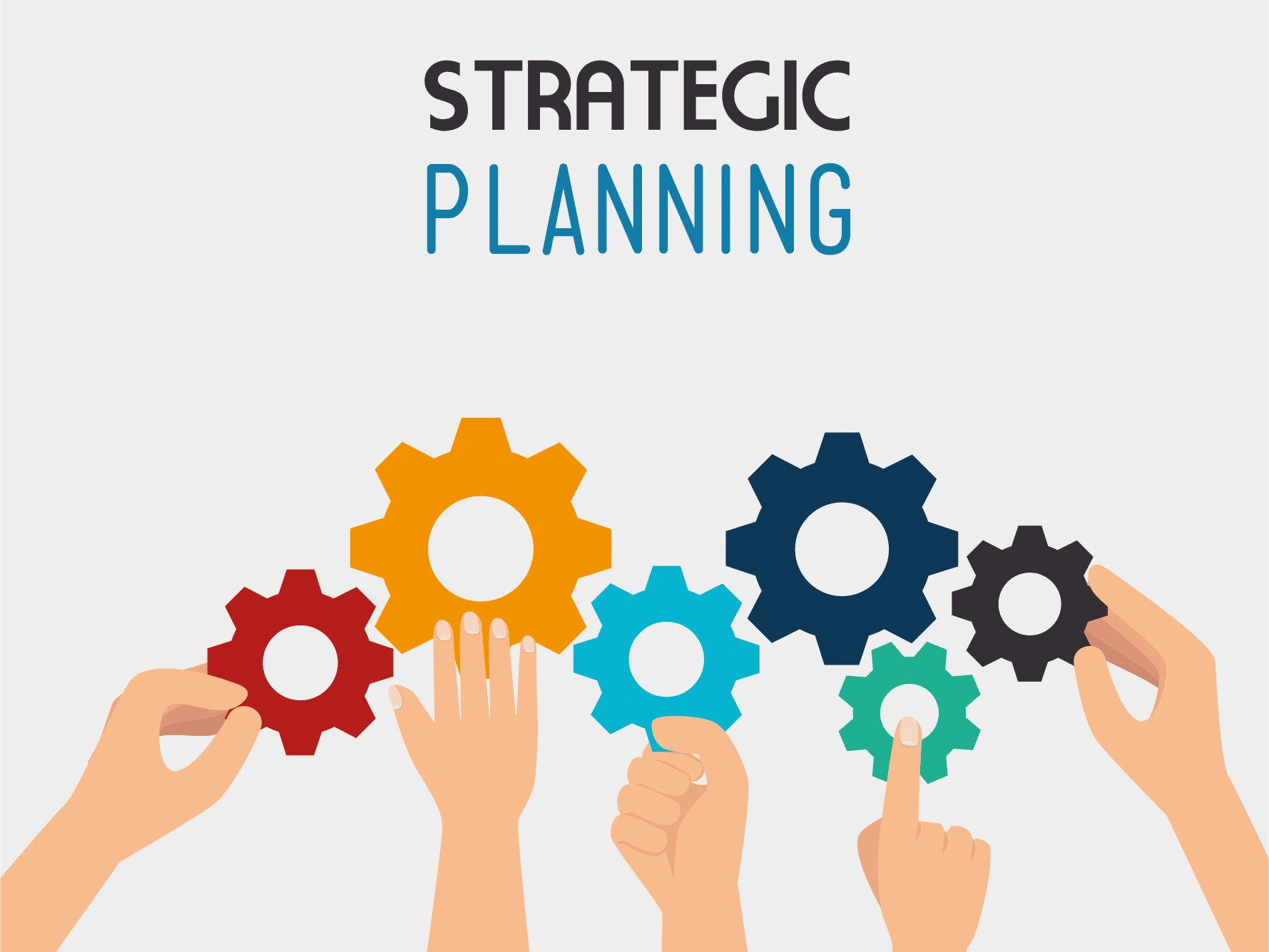ABCs of Strategic Planning Blog
An article focused on strategic planning in the non-profit sector.

The ABCs of Strategic Planning
Let’s talk about strategic planning!
Let’s talk about strat-e-gy
Let’s talk about goals bab-y
Let’s talk about all the good things and the bad things that can be
Let’s talk about plans
Before tackling a daunting task, I find it useful to go back to the basics. The strategic planning process can be difficult, so here are twenty-six pieces or letters of advice to prepare your organization for your next planning session!
Accountability. It is important for your organization to hold itself accountable to the strategic plan. Assigning specific staff members or departments to lead the charge on each project or activity in your plan will help your organization stay accountable.
Board Engagement. The Board is typically involved in approving your strategic plan, but that shouldn’t be the only time that they are involved. The Board can offer a valuable perspective on the mission, vision, and values of your organization, and Board members are some of your most important stakeholders. And, Board engagement could lead to an increased commitment to revisiting the organization's strategy on an ongoing basis.
Consultants. Consultants can take some of the pressure off the strategic planning process by providing specialized expertise to your organization. Consultants are also able to provide an outside perspective. Be sure to know what your organization is looking for in a consultant to ensure you find the right fit.
Data. Data-driven strategic planning. The performing arts may not yet be an industry that fully uses its data, but that doesn’t mean that you can’t source data creatively. According to McKinsey.com, one way to prompt broader thinking about potential data is to ask, “What decisions could we make if we had all the information we need?”
Environmental Scan. It is important to gather information about internal and external opportunities and threats. This data can be used to respond to your environment’s continuous change and better inform the future direction of the organization.
Finance. According to Carol Wiley, “the strategic plan lays out the direction and goals of the business and guidelines for actions to achieve those goals, while the budget looks at the money needed to support achieving those goals.” Financial measures are a more objective way to monitor your organization's process. Additionally, when staff members are able to connect the strategic action to the organization’s budget, they are responsible for organizational finances. And, this can stimulate more independent decision-making.
Goals. Goals provide direction and motivation for your organization. It is important that your organization does not use strategy and goal interchangeably. Best described by Mikal E. Belicove, an Entrepreneur magazine columnist and business strategist, “A goal is a broad primary outcome. A strategy is an approach you take to achieve a goal. An objective is a measurable step you take to achieve a strategy. A tactic is a tool you use in pursuing an objective associated with a strategy.”
Honesty. Developing a strategic plan takes a lot of honesty, candor, and foresight. Watering down your organization's weaknesses and opportunities don’t help you create an effective strategic marketing plan.
Implementation. Implementation is where most strategic plans fail. They end up sitting in a cabinet until the next strategic planning process begins. For successful implementation, connect your key strategies to specific actions, dates, and people.
Jargon. Imagine that a new staff member is stepping into a role that is primarily guided by your organization’s strategic plan. Would they be able to understand your strategic plan effectively? In the answer is no, you can include a glossary in your strategic plan or shift to a common vocabulary in order to turn your strategic plan into a communication tool as well as a method of operation.
Key stakeholders. The strategic plan is the responsibility of all stakeholders. To build support and ongoing engagement, actively involve key stakeholders in the process by letting them know what the strategic plan is and how they fit into the plan.
Leadership. I believe that visionary or transformational leadership is necessary for a strategic planning process. The strategic planning process demands leadership that is able to establish shared values, appropriate processes, and shared organizational goals. Leaders must be able to articulate objectives, inspire others, clearly communicate expectations, and curate demand for achievement.
Mission. The mission is and should be at the core of all organizational decision-making and strategic goals. An organization’s mission statement answers the question, “Why do we exist?” By starting with the organization’s mission, your fundamental purpose is able to provide a clear strategic direction as you strive to achieve your vision.
Needs Assessment. According to Study.com, a needs assessment is “a process used by organizations to determine priorities, make organizational improvements, or allocate resources. It involves determining the needs, or gaps, between where the organization envisions itself in the future and the organization's current state.”
Organizational Culture. Organizational culture creates shared norms and values in an organization. Organizational Culture should provide a framework for your organizational development and strategic planning. Without cultural alignment with strategy, a new strategy is more likely to fail.
Programs. Use CompassPoint’s Dual-Bottom Line Matrix to incorporate mission-driven decision-making along with financial decision-making. This will help your organization prioritize resource allocation for different programs.
Questions. Identifying your Big Question is one of the five key principles in La Piana Consulting’s Real-Time Strategic Planning approach to strategy development. A Big Question is an opportunity or threat to which the organization must respond. Remember, to get the right answers, your organization needs to be asking the right questions.
Resources. A strategic planning process can help your organization prioritize specific goals and objectives. This will also help you prioritize resource allocation to positively affect performance measures with your organization’s human and fiscal capital.
Strategy. In the Business Analysis Times, Richard Lannon states, “to be strategic means you have to get clear on the future you want (future state), where you are at today (present state) and where you came from (past state).” All strategy operates on organizational, programmatic, and operational levels, and it is important to know the difference between strategic and tactical decisions. Strategy is actionable!
Time. All goals and strategies should be grounded within a timeframe. With no timeframe tied, there’s no sense of urgency.
Uncomfortable. A strategic plan is supposed to be disruptive and, therefore, will cause discomfort as you strengthen your organization by tackling difficult questions
Vision. The goal of a strategic plan is to connect the present to the future. A strategic plan should show how your organization intends to move toward its vision.
Why. Simon Sinek says to start with why. Knowing your organization’s why as well gives your organization a filter to make choices with greater clarity and confidence as you continue to serve your constituents.
Xenagogy. A xenagogy is a guidebook. Make your strategic plan your organization’s guidebook. Because nothing is set in stone, use your xenagogy or strategic plan, to influence your course of day-to-day action.
Yes, and… In Tina Fey’s book, Bossypants, Fey outlines the rules of improv: “Always say ‘Yes, and…’ meaning, always agree, and add something to the discussion.” Yes, and.. fosters effective communication and encourages the free sharing of ideas, strengthening your strategic planning process.
Zeitgeist. Zeitgeist is a 19th-century german concept that refers to the “spirit of the times.” It is important to constantly monitor and update your strategic plan to counter the invisible force presented by the frequently changing ideas and beliefs of the time
Everyone’s strategic planning session needs a starting point, so why not start with the basics?
The alphabet might only have twenty-six opportunities to provide advice, but there are plenty of options to choose from for each letter.
Like this project
Posted Sep 14, 2022
An article focused on strategic planning in the non-profit sector.
Likes
0
Views
63






